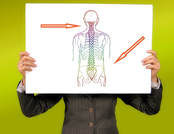 Dancers consume fewer calories than they expend (Dahlstrom et al., 1990; Beck et al., 2015; Hassapiduo et al., 2001; Doyle-Lucas et al., 2010; Brown et al., 2017) due to busy schedules, deliberate calorie restriction, pressure to maintain low body weight, and a lack of knowledge. Taking class on an empty stomach increases muscle breakdown, which is undesirable for dancers who need strength to dance. It is critical that dancers consume carbohydrates prior to training to reduce muscle fatigue and help preserve muscle fibers that generate power for jumping. The purpose of a pre-exercise meal - consumed within an hour or less before training - is to hydrate, top off glycogen stores, and decrease hunger. If you take a class early in the morning, you have most likely fasted overnight and will need carbohydrates to help fuel your first class. Consuming carbohydrate spares the use of protein for energy, thereby freeing up protein to synthesize muscle and repair tissue. Poor nutrition may result in the following consequences:
Recommendations Dancers should consume about 15 calories per pound body weight, plus the training energy expenditure, which is approximately 200 calories per hour of class or rehearsal. For example, a 130-pound (60-kg) dancer might need 1,860 calories per day plus an additional 500 to 800 calories to meet the demands of class, rehearsal or performance that day, for a total of 2,360 to 2,660 calories. Nutrition needs are very individualized, so it is important that dancers seek dietary advice from qualified specialists (i.e., a Registered Dietitian for dancers). References: Brown, M. A., Howatson, G., Quin, E., Redding, E., & Stevenson, E. J. (2017). Energy intake and energy expenditure of pre-professional female contemporary dancers. PLoS ONE, 12(2), e0171998. Dahlstrom M, Jansson E, Nordevang E, Kaijser L. (1990). Discrepancy between estimated energy intake and requirement in female dancers. Clinical physiology; 10(1):11-25. Epub 1990/01/01. Hassapidou MN, Manstrantoni A. (2001). Dietary intakes of elite female athletes in Greece. Journal of human nutrition and dietetics: the official journal of the British Dietetic Association;14(5):391-6. Epub 2002/03/22. Kostrzewa-Tarnowska A, Jeszka J. (2003). Energy balance and body composition factors in adolescent ballet school students. Polish Journal of Food and Nutrition Sciences;12(3):71-5. Beck KL, Mitchell S, Foskett A, Conlon CA, von Hurst PR. (2015). Dietary Intake, Anthropometric Characteristics, and Iron and Vitamin D Status of Female Adolescent Ballet Dancers Living in New Zealand. Int J Sport Nutr Exerc Metab; ;25(4):335-43. Epub 2014/11/12. doi: 10.1123/ijsnem.2014-0089 25386731 Doyle-Lucas AF, Akers JD, Davy BM. (2010). Energetic efficiency, menstrual irregularity, and bone mineral density in elite professional female ballet dancers. J Dance Med Sci;;14(4):146-54. Epub 2010/01/01. 21703085 Hirsch NM, Eisenmann JC, Moore SJ, Winnail SD, Stalder MA. (2003). Energy Balance and Physical Activity Patterns in University Ballet Dancers. Journal of Dance Medicine & Science;7(3):73-9. Sousa, M., Carvalho, P., Moreira, P., Teixeira, V. (2013). Nutrition and Nutritional Issues for Dancers. Medical Problems of Performing Artists, 28, 119. Montanari, A., & Zietkiewicz, E. A. (2000). Adolescent South African ballet dancers. South African journal of psychology, 30(2), 31-35.
1 Comment
3/18/2019 05:40:45 pm
Dancers should be always after their health. We all know that dancers deal with physical stuff everyday. Thus, they need to have a strong body, as well as their immune system. It's not okay to be a dancer yet you have a very weak body because you can never stay long in that industry when your lifestyle is not fit on what you do. Above are simple tips that you can follow, you have the choice to apply it on yourself or not. But hopefully, you guys will so that the experience would be fun!
Reply
Leave a Reply. |
CategoriesAll Cross Training Injury Prevention Nutrition Recipes Wellness Archives
October 2021
|
 RSS Feed
RSS Feed